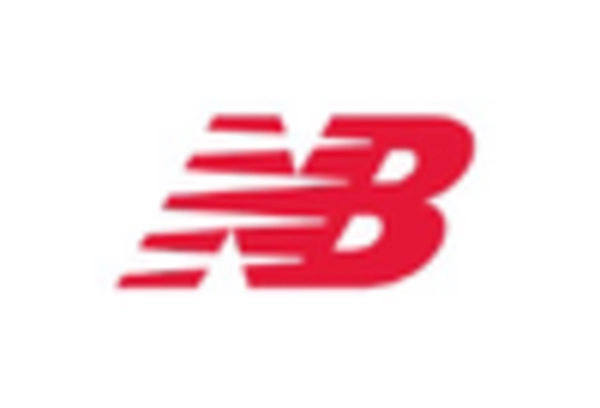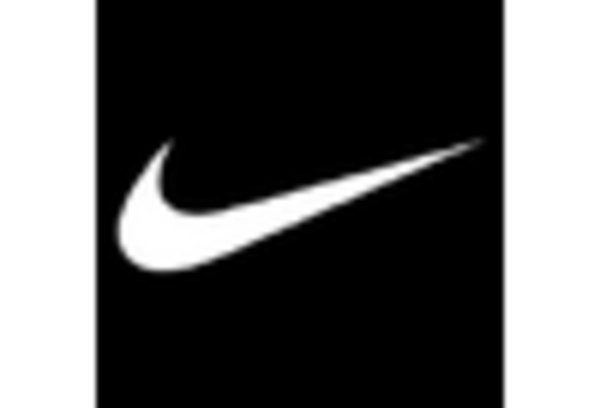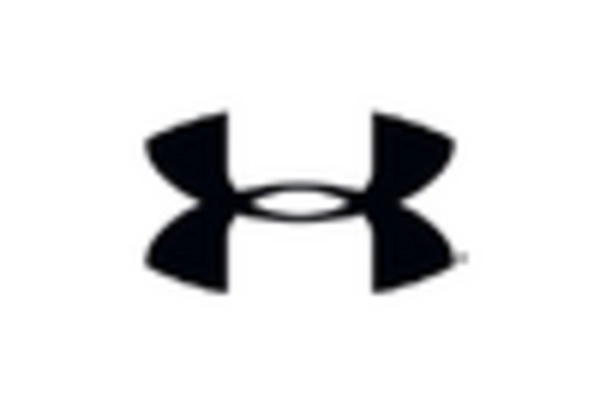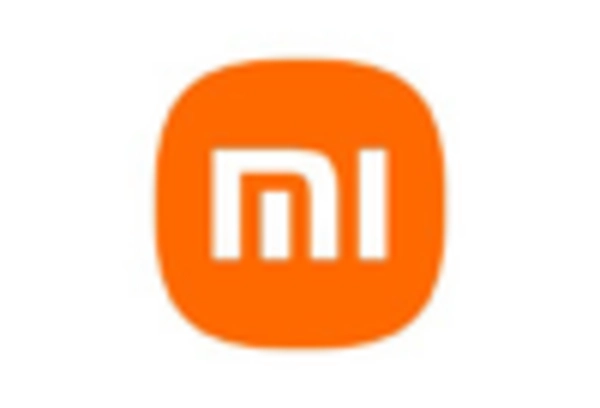Youth Culture and Fashion Trends
Youth culture in South Korea significantly drives the smart shoe market. Young consumers are increasingly drawn to innovative and stylish footwear that reflects their personal identity and lifestyle. The fusion of fashion and technology in smart shoes appeals to this demographic, as they seek products that are not only functional but also trendy. Recent studies indicate that around 70% of South Korean youths are willing to invest in smart footwear, highlighting a lucrative market opportunity. As fashion trends evolve, the smart shoe market is likely to adapt, offering designs that resonate with the preferences of younger consumers, thereby fostering growth.
Increased Health Awareness Among Consumers
In South Korea, there is a notable increase in health awareness among consumers, which is significantly impacting the smart shoe market. As individuals become more conscious of their physical well-being, the demand for products that promote an active lifestyle is on the rise. Smart shoes, equipped with features such as step tracking and calorie counting, cater to this growing demographic. Recent surveys indicate that approximately 60% of South Koreans are actively seeking fitness solutions, which suggests a strong market potential for smart footwear. This heightened focus on health and fitness is likely to drive sales in the smart shoe market, as consumers prioritize products that support their wellness goals.
Rising Popularity of Smart Home Integration
The trend of smart home integration is influencing the smart shoe market. As households increasingly adopt smart home devices, consumers are looking for footwear that can seamlessly connect with their existing technology. Smart shoes that offer compatibility with home automation systems, such as voice-activated assistants, are becoming more appealing. This integration not only enhances user convenience but also aligns with the lifestyle of tech-savvy consumers. Market analysis suggests that the smart home market in South Korea is expected to grow by 20% annually, which could positively impact the smart shoe market as consumers seek cohesive technology experiences across their daily lives.
Technological Advancements in Wearable Tech
The smart shoe market in South Korea is experiencing a surge due to rapid technological advancements in wearable technology. Innovations such as integrated sensors and Bluetooth connectivity are enhancing the functionality of smart shoes, allowing users to track their fitness metrics in real-time. This trend is particularly appealing to the health-conscious population, which has been growing steadily. According to recent data, the wearable technology sector is projected to grow at a CAGR of 15% over the next five years, indicating a robust demand for smart footwear. As consumers increasingly seek products that combine style with functionality, These technological enhancements are likely to benefit the smart shoe market, positioning it as a leader in the wearable tech space.
Government Initiatives Supporting Tech Innovation
Government initiatives in South Korea aimed at supporting technological innovation are positively influencing the smart shoe market. Policies that promote research and development in wearable technology are creating an environment conducive to growth. The South Korean government has allocated substantial funding to tech startups, which often focus on developing smart footwear solutions. This support is expected to enhance the competitiveness of local brands in the smart shoe market. Furthermore, initiatives aimed at fostering collaboration between educational institutions and the tech industry are likely to yield innovative products that meet consumer demands. As a result, the smart shoe market may experience accelerated growth driven by these supportive measures.
















Leave a Comment